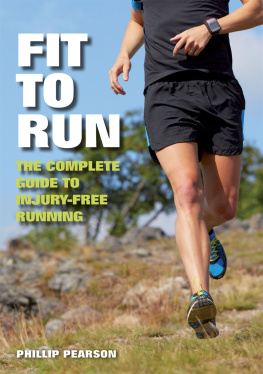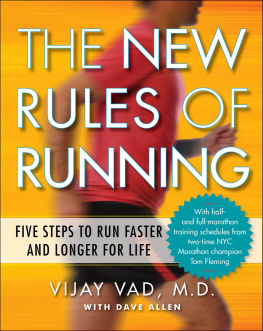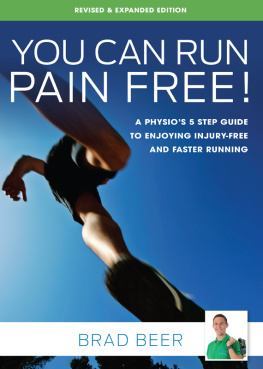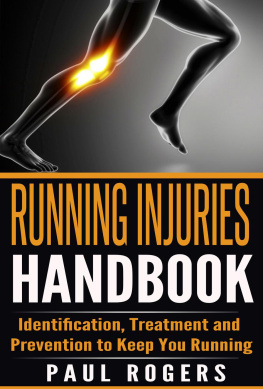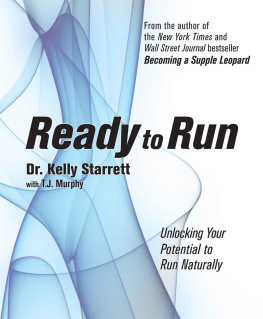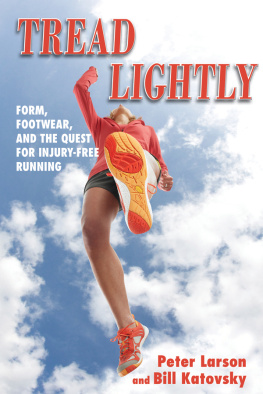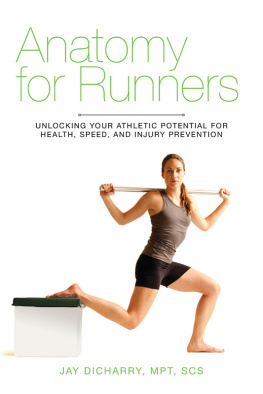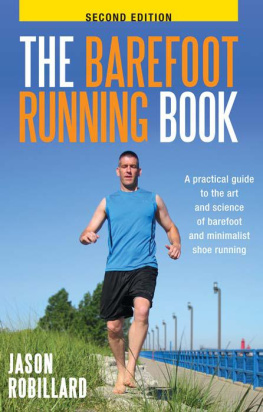
This book is intended as a reference volume only, not as a medical manual.
The information given here is designed to help you make informed decisions about your health.
It is not intended as a substitute for any treatment that may have been prescribed by your doctor.
If you suspect that you have a medical problem, we urge you to seek competent medical help.
Mention of specific companies, organizations, or authorities in this book does not imply endorsement by the author or publisher, nor does mention of specific companies, organizations, or authorities imply that they endorse this book, its author, or the publisher.
Originally published 1994 by Joe Ellis and Joe Henderson
2013 by Joe Ellis
Illustrations 1994 by Susan Rosenberger
All rights reserved. No part of this publication may be reproduced or transmitted in any form or by any means, electronic or mechanical, including photocopying, recording, or any other information storage and retrieval system, without the written permission of the publisher.
Book design by Joanna Williams
Library of Congress Cataloging-in-Publication Data is on file with the publisher.
ISBN 9781623361259 paperback
eISBN 9781623361266

rodalebooks.com
This book is dedicated to my mother, Esther Ellis Schwartz, whose strength and determination have always been my inspiration.
CONTENTS
INTRODUCTION
When I first started running, my friends told me that there were two types of runners: those who had been injured and those who were going to be injured at some point in their running careers. Being stubborn, I adamantly told them that I would be the exception. That attitude lasted for exactly 2 months, at which time my first injury occurred.
My mild case of tendinitis started my quest to learn everything I could about the biomechanics of running and the reasons certain runners get injured more often than others. What began as a hobby ended up being a full-time profession.
Years ago, most physicians simplistically thought that injuries resulted from overusethe cumulative stresses of the activity itselfrather than a traumatic accident. We usually get hurt from running farther, faster, or more often than our body can tolerate. Later, many sports-minded doctors realized that biomechanics, footwear, running style, and myriad other factors could also play a large role in the development of an injury.
Resting an injury is only a partial solution, at best. Rest can be essential in certain stages of some injuries, but it rarely gives lasting relief because it only addresses symptoms, not causes. Yet, unfortunately, that was the advice most runners were given years ago. In fact, that was the exact instruction that I was given by my physician after sustaining my original injury.
My addiction to running became so strong that after graduating from podiatric medical school, I accepted a biomechanical research fellowship. It gave me the opportunity to explore the specific gait and characteristics of runners and how they relate to injuries. I needed a method to evaluate gait in specific shoes and surfaces. Working with the biomechanics lab at the University of California, Berkeley, I developed an electronic means of measuring the motions that occurred in the foot, legs, and spine, and throughout the entire body, while running.
This opened up a whole new world of evaluating footwear and injuries. Now I, and other practitioners, had more than anecdotal evidence of what was happening to the foot and leg within different shoes and on various surfaces.
Excited about my discoveries, I reached out to Runners World magazine and its then senior editor, Joe Henderson. It turned out he was working on an article on the new breed of sports-minded podiatrists and was looking for the exact type of information that I had just gleaned.
By coincidence, he had been struggling with a heel injury, and treatment had brought little success. He ran as most other runners did at the timewhich is to say: unwisely. Too many races and too many miles without much cushioning or support in his shoes and without cross-training or other ways of supplementing his activity.
Joe had a basic understanding of the scope of education of podiatrists but was not aware of our potential role as the future leaders of the sports-medicine revolution.
I evaluated how Joe moved and then prescribed corrective exercises for tight leg muscles, orthotic devices for his gait irregularities, and a change in shoes to better match his foot type. I never told him to stop running, but I did advise him to run within the limits of pain.
Even after treatment, the pain seriously limited his running. He had left the injury untreated for too long. So we performed minor surgery to remove a bony growth that rubbed constantly on his Achilles tendon. With this irritant gone, the other prescribed changes could do their job. Years later, the prescription of stretching exercises, orthotics, and proper shoes still serves him well.
My determination was to root out the causes of injuries instead of merely treating symptoms. I looked for long-term prevention rather than temporary cures. I have worked with thousands of runners and have almost as many stories to tell, some of which youll read in this book. They brim with the helpful, hopeful advice that just might save your running career.
Dr. Joseph Ellis
May 13, 2013
La Jolla, California
1
Why Runners Get Hurt
Im often asked, What separates world-class runners from the rest of the pack? My first answer is freedom from injury.
Very few runners can tolerate high levels of training for many years. Many runners have the talent to rank among the best, but injuries slow them down or force them into an early retirement.
Injuries are, unfortunately, a fact of the runners life. While running is an excellent way to improve the cardiovascular system, it puts tremendous strains on the musculoskeletal system. Runners feet and legs take more pounding than they are made to handle, making runners the most frequent visitors to sports-medicine specialists with problems ranging from minor aches and strains to torn Achilles tendons and damaged knees.
Runners World surveys have constantly shown that in any given year, about half the magazines readers have their running program interrupted by injury. According to a survey of 10,754 runners I helped conduct, 75 percent of male runners and 80 percent of female runners have suffered at least one injury serious enough to halt their running at least temporarily. More than half of them sought professional treatment.
The Perils of Overuse
The number-one reason for injuries is overuserunning too much, too fast, too soon, or too often. We term all of these overuse problems training errors. This is a polite way of saying that your body cannot handle the stresses that you have placed on it.
Nevertheless, runners are frequently tempted to overdo. Bob Babbitt, an Ironman Hall of Famer and cofounder of Competitor magazine, once asked finishers of the Long Beach Marathon, What would you do differently in preparing for your next endurance event? The unanimous answer: Train more.


